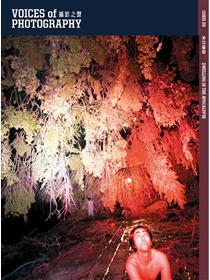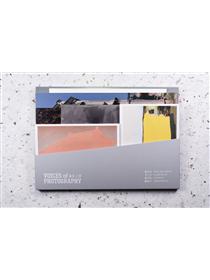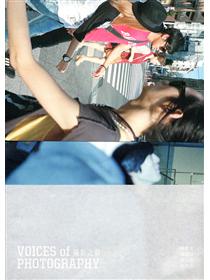




本期我們掘考台灣與東亞視覺經驗裡,難以忽略的、由西方傳教士生產的巨量影像,剖析其產製歷程與文化政治,以及對現代身體與感知帶來的全面影響。
在專題中,陳偉智探究自十九世紀中葉以來西方傳教士在台灣的傳教網絡,從馬雅各、甘為霖、巴克禮到馬偕牧師等,如何間接或直接參與了台灣早期的攝影活動,並令宣教事工的見證影像,化為今日廣泛複製傳佈的台灣歷史圖景。賀威瑋考察在國共戰爭之後被迫離開中國的美籍傳教士過往攝製的大量照片、膠捲、相本與圖冊,從查禁到重塑,顯影二十世紀初傳教士視覺現代性在東亞的一段曲折軌跡。吳易叡尋訪基督教英國醫療傳教士蘭大弼家族自日本殖民時期以來的台灣照片收藏,論析早年傳教士影像對異文化與他者的再現和流通,以及照片與圖像在鞏固醫療傳教經典敘事中的關鍵角色,揭示醫學、宗教與影像間複雜的共構關係。
黃乃琦探討天主教耶穌會士在台灣成立的「光啟社」,如何在二十世紀中期引進美國傳播技術,塑造台灣廣播電視節目、動畫與攝製的初期發展。
尋跡解密檔案,李威儀追索傅良圃神父拍攝於戰後台灣、在1959年出版的攝影專輯《The Face of T aiwan》(台灣寫真)以及隨後他在台北美國新聞處舉行的大型攝影個展,何以在高壓管制的戒嚴時期得以發生,並成為冷戰年代裡傳教士攝影的代表之作。
為擴展影像與歷史的更多思索,我們特別專訪甫以紀錄片《由島至島》獲頒金馬獎的廖克發導演——該片以結合眾多影像資料與不懈追問,直面二戰末期台灣人參與日軍在東南亞施暴的暗面記憶而發人深省,本期訪談帶來更多對於「歷史」與「正義」的深切反思。而就在眼前,面對戰後仍在持續的帝國暴力史,阿莉耶拉.阿依莎.阿祖萊(Ariella Aïsha Azoulay)的專文細細分析了在歐美強權認可之下、自1948年起以色列政權對巴勒斯坦人所展開的驅逐,以及將他們呈現為難民的影像建置效應,如何系統性地擴大為此刻正在加薩執行的大屠殺,而亟需國際社會正視,並立即制止此一種族滅絕罪行。
此外,高重黎闡述其以帶著戰爭創傷印記的電影——雷奈《廣島之戀》(1959)之不完整底片拷貝,所重新編織為十二台幻燈機流轉映現逾九百張靜幀交錯運動的裝置作品《十六小時的情事》,巧妙拆解影音政治的時空構造。本期亦揭載陳傳興「個人精神史」三部曲系列的彩色終曲,探訪他在上世紀末的視覺行旅與暗房實驗中,對「光」與「色」的本質思辨,以及難得一見對其青年時期攝影經歷的回憶。
同時,我們也與近期以攝影書作品獲頒國際獎項的年輕藝術家林詩硯、蔡定邦與李俐亞進行攝影製書的創作對話,一探書頁編輯的內蘊氣場。
而為紀念長期關注民藝、實踐田野調查攝影的先行者黃永松(1943-2024),特別收錄其早年攝影作品,以及奚淞追憶他們共同的文藝青春和《漢聲》報導攝影工作之記述。最後,本刊在此致敬遠行的藝術家張照堂(1943-2024),現正籌備專號,隨著新年開始再接續與大家分享。編寫路途漫漫迢迢,感謝讀者一直以來的支持與耐心等候。
This issue of VOP delves into the vast visual archive produced by Western missionaries.
A body of work that is impossible to overlook due to its sheer volume in re-examining the visualexperiences of T aiwan and East Asia.
We analyze the productionprocess and cultural politics behind the images, as well as theirprofound impact on the modernization of the body and perception.
We first take a look at Chen Wei-Chis exploration of how Westernmissionaries who have come to Taiwan since the mid-19thcentury, including James Maxwell, William Campbell, ThomasBarclay and George Leslie Mackay, had directly or indirectlyparticipated in early photography activities in Taiwan, turning thephotographic testimonies of missionary work into an image recordof Taiwans history that is being widely reproduced anddisseminated today. Joseph W. Ho examines the large number of photos, films, albums and illustrations left behind by the Americanmissionaries who were forced to leave China after the Chinese Civil War to reveal the tortuous trajectory of modern visuality ofthe missionaries in East Asia in the early 20th century which were
marked by censorship and reconstruction. Harry Yi-Jui Wu goesthrough British medical missionary Dr. David Landsborough IVsfamily photo collection from the Japanese colonial period in Taiwan, and discusses the reproduction and dissemination of early missionary images to the others, and how photographs and 1 images were key to consolidating the classic narrative of medicalmissionary work, revealing the complex relationship betweenmedicine, religion and imagery. Hwang Nae-Chyi explores howthe Kuangchi Program Service set up by Catholic Jesuitsintroduced communication technology from the US into T aiwan inthe mid 20th century, shaping the early development of thecountrys television, animation and filming industries. Withdeclassified files, Lee Wei-I follows the traces of Father FredericJ. Foley through his photographs taken in post-war Taiwan thatwere published in The Face of Taiwan in 1959 and how hemanaged to pull off a large-scale solo exhibition that hesubsequently held at the US Information Service office in T aipeiduring the highly oppressive era of martial law which becamerepresentative of missionary photography during the years of theCold War.
T o broaden our thinking on imagery and history, we conducted aspecial interview with director Lau Kek-Huat, whose film FromIsland to Island just won the Best Documentary Feature at theGolden Horse Awards. By combining extensive image archivesand relentless questioning, the film confronts the dark memoriesof T aiwanese people participating in the Japanese militarysatrocities committed in Southeast Asia during the final days of
World War II. The interview will bring more thought-provokingreflections on “history” and “justice”. As we face the history ofimperial violence that continues even till this day, Ariella AïshaAzoulays essay provides an in-depth analysis of thedisplacement of Palestinians by the Israeli regime since 1948,endorsed by Western powers, and the systematic portrayal of Palestinians as refugees through imagery. She argues that this
has escalated into the genocide that is happening now in Gaza,calling for global attention and immediate action to stop this
heinous act.
In addition, Kao Chung-Li explains how he gives a new spin toFrench director Alain Resnais Hiroshima mon amour (1959), a work that bears the mark of trauma from war, turning the incomplete film prints into an installation piece of the same title,featuring twelve projectors that are constantly cycling through 900 interwoven still frames, cleverly deconstructing the spatiotemporal structures of audiovisual politics. This issue also features the colorful finale of Cheng T sun-Shings trilogy series “A Personal Passage” that delves into his profound reflections on light and colors from his visual explorations in the late 20th century including darkroom experiments, as well as rare recollections of his experiences with photography from his younger days.
2
At the same time, we also engaged in creative dialogues with young artists, Lin Shihyen, T sai Ting-Bang and Lee Liya, who recently received international accolades for their photobooks on exploring the subtle dynamics of photobook editing. We also included the early photographic works of late Huang Yung-Sung (1943-2024) to commemorate his efforts as a pioneer in field research photography and as an advocate for folk arts, as well as
Shi Sungs reminiscences of their shared artistic youth and their photographic documentary work on the Echo Magazine. Finally,
we pay tribute to artist Chang Chao-T ang (1943-2024), who had embarked on his final journey with a special issue that will be
ready in the new year. The process of putting everything together is a long one — heres a special thanks to all our readers for your continued support and patience.
作者簡介:
《Voices of Photography 攝影之聲》是一份影像文化獨立刊物。自2011年創刊,致力探索攝影的文化、歷史與思潮,並持續推動影像閱讀、書寫和研究。
《攝影之聲》長期關注亞洲的攝影發展歷程,重視亞際連結,集結國內外眾多學者、藝術家與文化工作者共同參與撰述,透過每期不同的主題視野,製作出豐富的專題與單元,收錄重要的創作文獻,同時亦以「影言社」為名出版相關叢書,是台灣少數專注於攝影與視覺文化論述領域的獨立出版單位,曾多次獲頒台灣出版界最高榮譽「金鼎獎」各類獎項。
Voices of Photography is an independent publication dedicated to image culture. Since its inception in 2011, VOP has been exploring the culture, history and philosophy of photography, and continually promoting imagery reading, critique, and research.
VOP has always focused on the development of photography in Asia and places special importance on inter-Asian connections. Through collaborative effort with scholars, artists and cultural workers locally and from all over the world, VOP has been gathering important literature and research materials, presenting rich and varied features with a different theme every issue. Now engaging in the publication of written work and criticism through VOP BOOKS, VOP is one of the few independent publishers in Taiwan that focuses on photography and visual culture, earning many accolades at the Golden Tripod Awards, the highest honor in Taiwan’s publishing industry.
 收藏
收藏
優惠價: 9 折, NT$ 432 NT$ 480
優惠截止日:至2025年03月07日
運送方式:超商取貨、宅配取貨
銷售地區:全球
限量商品,即時庫存>5
本期我們掘考台灣與東亞視覺經驗裡,難以忽略的、由西方傳教士生產的巨量影像,剖析其產製歷程與文化政治,以及對現代身體與感知帶來的全面影響。
在專題中,陳偉智探究自十九世紀中葉以來西方傳教士在台灣的傳教網絡,從馬雅各、甘為霖、巴克禮到馬偕牧師等,如何間接或直接參與了台灣早期的攝影活動,並令宣教事工的見證影像,化為今日廣泛複製傳佈的台灣歷史圖景。賀威瑋考察在國共戰爭之後被迫離開中國的美籍傳教士過往攝製的大量照片、膠捲、相本與圖冊,從查禁到重塑,顯影二十世紀初傳教士視覺現代性在東亞的一段曲折軌跡。吳易叡尋訪基督教英國醫療傳教士蘭大弼家族自日本殖民時期以來的台灣照片收藏,論析早年傳教士影像對異文化與他者的再現和流通,以及照片與圖像在鞏固醫療傳教經典敘事中的關鍵角色,揭示醫學、宗教與影像間複雜的共構關係。
黃乃琦探討天主教耶穌會士在台灣成立的「光啟社」,如何在二十世紀中期引進美國傳播技術,塑造台灣廣播電視節目、動畫與攝製的初期發展。
尋跡解密檔案,李威儀追索傅良圃神父拍攝於戰後台灣、在1959年出版的攝影專輯《The Face of T aiwan》(台灣寫真)以及隨後他在台北美國新聞處舉行的大型攝影個展,何以在高壓管制的戒嚴時期得以發生,並成為冷戰年代裡傳教士攝影的代表之作。
為擴展影像與歷史的更多思索,我們特別專訪甫以紀錄片《由島至島》獲頒金馬獎的廖克發導演——該片以結合眾多影像資料與不懈追問,直面二戰末期台灣人參與日軍在東南亞施暴的暗面記憶而發人深省,本期訪談帶來更多對於「歷史」與「正義」的深切反思。而就在眼前,面對戰後仍在持續的帝國暴力史,阿莉耶拉.阿依莎.阿祖萊(Ariella Aïsha Azoulay)的專文細細分析了在歐美強權認可之下、自1948年起以色列政權對巴勒斯坦人所展開的驅逐,以及將他們呈現為難民的影像建置效應,如何系統性地擴大為此刻正在加薩執行的大屠殺,而亟需國際社會正視,並立即制止此一種族滅絕罪行。
此外,高重黎闡述其以帶著戰爭創傷印記的電影——雷奈《廣島之戀》(1959)之不完整底片拷貝,所重新編織為十二台幻燈機流轉映現逾九百張靜幀交錯運動的裝置作品《十六小時的情事》,巧妙拆解影音政治的時空構造。本期亦揭載陳傳興「個人精神史」三部曲系列的彩色終曲,探訪他在上世紀末的視覺行旅與暗房實驗中,對「光」與「色」的本質思辨,以及難得一見對其青年時期攝影經歷的回憶。
同時,我們也與近期以攝影書作品獲頒國際獎項的年輕藝術家林詩硯、蔡定邦與李俐亞進行攝影製書的創作對話,一探書頁編輯的內蘊氣場。
而為紀念長期關注民藝、實踐田野調查攝影的先行者黃永松(1943-2024),特別收錄其早年攝影作品,以及奚淞追憶他們共同的文藝青春和《漢聲》報導攝影工作之記述。最後,本刊在此致敬遠行的藝術家張照堂(1943-2024),現正籌備專號,隨著新年開始再接續與大家分享。編寫路途漫漫迢迢,感謝讀者一直以來的支持與耐心等候。
This issue of VOP delves into the vast visual archive produced by Western missionaries.
A body of work that is impossible to overlook due to its sheer volume in re-examining the visualexperiences of T aiwan and East Asia.
We analyze the productionprocess and cultural politics behind the images, as well as theirprofound impact on the modernization of the body and perception.
We first take a look at Chen Wei-Chis exploration of how Westernmissionaries who have come to Taiwan since the mid-19thcentury, including James Maxwell, William Campbell, ThomasBarclay and George Leslie Mackay, had directly or indirectlyparticipated in early photography activities in Taiwan, turning thephotographic testimonies of missionary work into an image recordof Taiwans history that is being widely reproduced anddisseminated today. Joseph W. Ho examines the large number of photos, films, albums and illustrations left behind by the Americanmissionaries who were forced to leave China after the Chinese Civil War to reveal the tortuous trajectory of modern visuality ofthe missionaries in East Asia in the early 20th century which were
marked by censorship and reconstruction. Harry Yi-Jui Wu goesthrough British medical missionary Dr. David Landsborough IVsfamily photo collection from the Japanese colonial period in Taiwan, and discusses the reproduction and dissemination of early missionary images to the others, and how photographs and 1 images were key to consolidating the classic narrative of medicalmissionary work, revealing the complex relationship betweenmedicine, religion and imagery. Hwang Nae-Chyi explores howthe Kuangchi Program Service set up by Catholic Jesuitsintroduced communication technology from the US into T aiwan inthe mid 20th century, shaping the early development of thecountrys television, animation and filming industries. Withdeclassified files, Lee Wei-I follows the traces of Father FredericJ. Foley through his photographs taken in post-war Taiwan thatwere published in The Face of Taiwan in 1959 and how hemanaged to pull off a large-scale solo exhibition that hesubsequently held at the US Information Service office in T aipeiduring the highly oppressive era of martial law which becamerepresentative of missionary photography during the years of theCold War.
T o broaden our thinking on imagery and history, we conducted aspecial interview with director Lau Kek-Huat, whose film FromIsland to Island just won the Best Documentary Feature at theGolden Horse Awards. By combining extensive image archivesand relentless questioning, the film confronts the dark memoriesof T aiwanese people participating in the Japanese militarysatrocities committed in Southeast Asia during the final days of
World War II. The interview will bring more thought-provokingreflections on “history” and “justice”. As we face the history ofimperial violence that continues even till this day, Ariella AïshaAzoulays essay provides an in-depth analysis of thedisplacement of Palestinians by the Israeli regime since 1948,endorsed by Western powers, and the systematic portrayal of Palestinians as refugees through imagery. She argues that this
has escalated into the genocide that is happening now in Gaza,calling for global attention and immediate action to stop this
heinous act.
In addition, Kao Chung-Li explains how he gives a new spin toFrench director Alain Resnais Hiroshima mon amour (1959), a work that bears the mark of trauma from war, turning the incomplete film prints into an installation piece of the same title,featuring twelve projectors that are constantly cycling through 900 interwoven still frames, cleverly deconstructing the spatiotemporal structures of audiovisual politics. This issue also features the colorful finale of Cheng T sun-Shings trilogy series “A Personal Passage” that delves into his profound reflections on light and colors from his visual explorations in the late 20th century including darkroom experiments, as well as rare recollections of his experiences with photography from his younger days.
2
At the same time, we also engaged in creative dialogues with young artists, Lin Shihyen, T sai Ting-Bang and Lee Liya, who recently received international accolades for their photobooks on exploring the subtle dynamics of photobook editing. We also included the early photographic works of late Huang Yung-Sung (1943-2024) to commemorate his efforts as a pioneer in field research photography and as an advocate for folk arts, as well as
Shi Sungs reminiscences of their shared artistic youth and their photographic documentary work on the Echo Magazine. Finally,
we pay tribute to artist Chang Chao-T ang (1943-2024), who had embarked on his final journey with a special issue that will be
ready in the new year. The process of putting everything together is a long one — heres a special thanks to all our readers for your continued support and patience.
作者簡介:
《Voices of Photography 攝影之聲》是一份影像文化獨立刊物。自2011年創刊,致力探索攝影的文化、歷史與思潮,並持續推動影像閱讀、書寫和研究。
《攝影之聲》長期關注亞洲的攝影發展歷程,重視亞際連結,集結國內外眾多學者、藝術家與文化工作者共同參與撰述,透過每期不同的主題視野,製作出豐富的專題與單元,收錄重要的創作文獻,同時亦以「影言社」為名出版相關叢書,是台灣少數專注於攝影與視覺文化論述領域的獨立出版單位,曾多次獲頒台灣出版界最高榮譽「金鼎獎」各類獎項。
Voices of Photography is an independent publication dedicated to image culture. Since its inception in 2011, VOP has been exploring the culture, history and philosophy of photography, and continually promoting imagery reading, critique, and research.
VOP has always focused on the development of photography in Asia and places special importance on inter-Asian connections. Through collaborative effort with scholars, artists and cultural workers locally and from all over the world, VOP has been gathering important literature and research materials, presenting rich and varied features with a different theme every issue. Now engaging in the publication of written work and criticism through VOP BOOKS, VOP is one of the few independent publishers in Taiwan that focuses on photography and visual culture, earning many accolades at the Golden Tripod Awards, the highest honor in Taiwan’s publishing industry.

※ 二手徵求後,有綁定line通知的讀者,
該二手書結帳減2元。(減2元可累加)
請在手機上開啟Line應用程式,點選搜尋欄位旁的掃描圖示
即可掃描此ORcode
|
||||||||||||||||||
|
||||||||||||||||||
|
||||||||||||||||||












